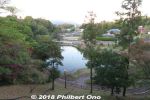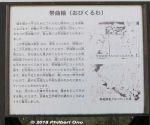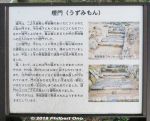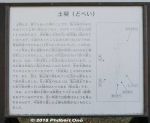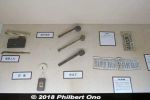 Image search results - "kameyama" Image search results - "kameyama" |

During the Edo Period, Kameyama Castle was the Ise-Kameyama Domain headquarters and center of Kameyama-juku lodging town on the Tokaido Road.It still has the Tamon-yagura turret (open to the public), castle walls, and a partially reconstructed Ninomaru keep. Short walk from JR Kameyama Station (JR Kansai Line).
|
|

When you walk from JR Kameyama Station to the castle, you will first see this large athletic field (baseball, etc.) and a stone wall and turret. The field was the Honmaru.
|
|
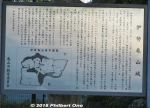
About Kameyama Castle originally built in 1265 and last occupied by the Ishikawa Clan.
|
|

Kameyama Castle's Tamon-yagura turret on a high stone wall. One of the few remnants remaining. Most of the castle was dismantled by the Meiji government in 1873.
|
|
|
|

Kameyama Castle's Tamon-yagura turret.
|
|

Next to the castle is a stone monument marking the birthplace of Iinuma Yokusai (1782–1865), a Japanese botanist and physician. 飯沼慾斎
|
|

Kameyama Castle's Tamon-yagura turret. 多聞櫓
|
|

Kameyama Castle's Tamon-yagura turret in autumn. 多聞櫓
|
|

Kameyama Castle's Tamon-yagura turret. 多聞櫓
|
|

Kameyama Castle's Tamon-yagura turret. 多聞櫓
|
|
|

Steps to Kameyama Castle's Tamon-yagura turret. It was renovated in 2012. 多聞櫓
|
|
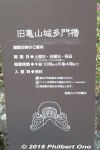
Kameyama Castle's Tamon-yagura turret is open 10 am to 4 pm, free admission. Unfortunately, I arrived after it closed.
|
|

Steps to Kameyama Castle's Tamon-yagura turret.
|
|

Kameyama Castle's Tamon-yagura turret.
|
|

Roof of Kameyama Castle's Tamon-yagura turret.
|
|
|
|

View from Tamon-yagura turret.
|
|

View from Tamon-yagura turret.
|
|

Tamon-yagura turret.
|
|
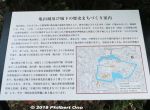
History of Kameyama Castle town.
|
|
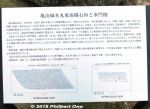
Stone wall design under Tamon-yagura turret.
|
|

Tamon-yagura turret.
|
|

Castle well.
|
|

Kameyama Castle well.
|
|
|

Kameyama Enbujo 亀山演武場
|
|

Emperor Meiji once stayed in this home that was moved here.
|
|
|

Lodging for Emperor Meiji when he passed through Kameyama in 1880.
|
|
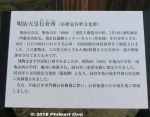
About the lodging for Emperor Meiji when he passed through Kameyama in 1880.
|
|
|
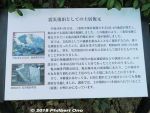
About the reconstructed stone foundation.
|
|
|
|
|
|

Kameyama Shrine in Mie. 亀山神社
|
|

Kameyama Shrine is dedicated to samurai Minamoto Yoshiie and many other deities. 亀山神社
|
|
|
|
|

Way to Kameyama Castle's three-story turret site. 三重櫓跡
|
|

Kameyama Castle's three-story turret site.
|
|

Kameyama Castle's three-story turret site.
|
|
|
|
|
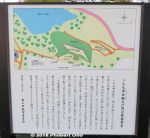
About the Ninomaru keep's fringe.
|
|
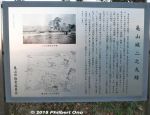
About the Ninomaru.
|
|

Ninomaru fringe.
|
|
|
|
|

Ninomaru fringe walls were reconstructed.
|
|
|
|
|
|
|
|
|
|
|
|
|
|

Partial stone wall remaining.
|
|

Partial stone wall remaining.
|
|
|
|

Pillar foundation stone.
|
|

About the pillar foundation stone.
|
|

Part of the Honmaru castle grounds now occupied by Kameyama Nishi Elementary School.
|
|

Part of the Honmaru castle grounds now occupied by Kameyama Nishi Elementary School.
|
|

Masumi Children's Park ますみ児童園
|
|

Stema locomotive in the Ninomaru area.
|
|
|

Kameyama Castle manhole in Kameyama, Mie Prefecture.
|
|
|
|

JR Kameyama Station (Kansai Line).
|
|

In front of JR Kameyama Station.
|
|

JR Kameyama Station platform.
|
|

JR Kameyama Station platform and tracks.
|
|

JR Kameyama Station platform.
|
|

Seki-juku was the 47th station or lodging/post town on the old Tokaido Road. It well retains a traditional townscape with a good number of traditional Edo Period buildings including the Honjin and Waki Honjin. Seki-juku is preceded by Kameyama-juku and followed by Sakashita-juku. All three are in the present-day city of Kameyama. Hiroshige also created this woodblock print of Seki-juku in the 1830s. It depicts daimyo staff preparing to leave the Honjin lodge before dawn (notice the still dark sky). Unknown which Honjin it is. (Seki had two Honjin.)
|
|

Seki-juku stretches for about 1.8 km. The whole town is small enough to walk through. A few buildings are open to the public as museums. Seki-juku is also a National Important Traditional Townscape Preservation District (重要伝統的建造物群保存地区). Short walk from JR Seki Station on the JR Kansai Main Line.
|
|

Seki-juku is highly recommended for Tokaido stage town and architecture fans. Seki-juku manhole with a traveler design, Kameyama, Mie Prefecture.
|
|

JR Seki Station building has a traditional design. It also houses a tourist information office and exhibition space. From Nagoya, it's about
|
|
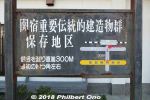
Way to Seki-juku.
|
|

From Seki Station, a short walk on this road to Seki-juku.
|
|

Old Tokaido Road in Seki-juku. Picturesque.
|
|

Lots of wooden lattice on the exterior, used to block rain and wind.
|
|
|
|
|
|
|
|

Seki Machinami Shiryokan (Seki Townscape Museum) is a local history/culture museum. 関まちなみ資料館
|
|

Entrance to Seki Machinami Shiryokan (Seki Townscape Museum). It looks narrow, but the building is quite long. 関まちなみ資料館
|
|
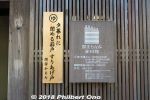
Adult admission ¥300, open 9 am to 4:30 pm.
|
|

The museum has this colorful Seki-juku manhole, Kameyama, Mie Prefecture. They even give you a manhole card.
|
|

Entering the Seki Townscape Museum.
|
|
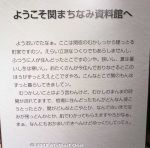
Welcome to Seki Townscape Museum. It explains about the town and why so many buildings have been preserved.
|
|
|

Money box, probably a safe.
|
|
|

Stairway also serve as storage space.
|
|

Stairway to 2nd floor.
|
|

Room on 2nd floor.
|
|

About the Ito Honjin lodge.
|
|

About the Kawa-kita Honjin lodge.
|
|

Small exhibition room on 2nd floor (or maybe attic).
|
|

Old coins and dishes/pottery.
|
|

Charcoal heater.
|
|

Tokonoma alcove.
|
|
|

Corridor
|
|

Another small exhibition room.
|
|
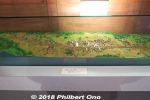
Scale model of Seki-juku.
|
|
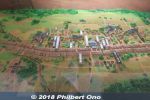
Scale model of Seki-juku.
|
|

Old map of Seki-juku.
|
|

Traditional buildings that still remain in Seki-juku.
|
|

How Seki-juku started out. The town was named "Seki" in the early 18th century.
|
|

Exhibition room of photos of Seki-juku's skyline.
|
|

Grandfather's clock.
|
|

Kitchen stove.
|
|

Indoor well.
|
|
|

Old bicycle from the late 19th century (Meiji Period). Still a rare luxury item in those days. Bicycles became widely used in Japan from the 1930s. This bicycle was donated by a local resident in Seki.
|
|

Kura storehouse
|
|

Kitchen stove.
|
|

Festival float storehouse or dashi-gura. One of four remaining today. Originally there were 16 floats. There's a window where you can see part of the Nakamachi Sanbancho float inside.
|
|
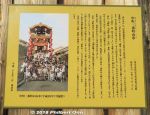
About the Nakamachi Sanbancho float festival float. The Seki Hikiyama Festival is held on a weekend in late July.
|
|
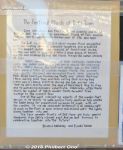
About Seki's float festival in English. This was posted on a nearby house.
|
|

About Seki's festival floats.
|
|
|

Seki-juku's traditional townscape continues.
|
|

Tanaka-ya coffee shop.
|
|
|
|

Road marker
|
|
|

Tsuruya inn. 鶴屋脇本陣跡
|
|
|
|
|
|

You see a lot of wooden lattice on the exterior. Supposed to ward off wind and rain.
|
|

Hyaku-rokuri-tei has a building with a view of Seki-juku. 百六里庭
|
|
|

Hyaku-rokuri-tei
|
|

View from Chokantei. 眺関亭からの眺望
|
|
|
|

View from Chokantei. 眺関亭からの眺望
|
|

View from Chokantei, looking toward Jizo-in Temple. 眺関亭からの眺望
|
|
|

Ito Honjin lodge. Now an electronics shop. 伊藤本陣跡
|
|

Ito Honjin lodge was Seki-juku's high-class lodge for VIP travelers like daimyo lords. 伊藤本陣跡
|
|
|
|

Ishigaki-ya inn. It's actually an inn where you can stay. ¥2,500/night.
|
|

Ishigaki-ya
|
|

Old koto and skis in Ishigaki-ya.
|
|

Tamaya inn is another major museum in Seki-juku. 旅籠玉屋歴史資料館
|
|

Tamaya inn is another major museum in Seki-juku. 旅籠玉屋歴史資料館
|
|

Tamaya inn
|
|
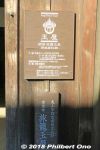
Tamaya inn adult admission ¥300. Must see. 旅籠玉屋歴史資料館
|
|

About the three types of inns in stage towns.
|
|

Seki-juku had 42 inns including two Honjin and two Waki-Honjin.
|
|

Tamaya entrance hall.
|
|

Tamaya inn's front desk.
|
|

Tamaya inn's front desk.
|
|

Tamaya inn's front desk clerk.
|
|

Abasuc.
|
|

Tamaya kitchen stove.
|
|

Tamaya kitchen stove.
|
|

Tamaya kitchen stove.
|
|

Tamaya kitchen
|
|

Sake flasks and delivery box.
|
|

Kitchen roof was high to dilute the smoke.
|
|
|
|

Tamaya has many rooms with exhibits.
|
|
|

Tamaya courtyard.
|
|
|
|

Tamaya tokonoma alcove.
|
|
|

Tamaya inn Guest room
|
|

Dining room on the 2nd floor of Tamaya inn.
|
|

Dining room on the 2nd floor of Tamaya inn.
|
|

Guest room on the 2nd floor of Tamaya, a high-class inn.
|
|

Guest room on the 2nd floor of Tamaya inn.
|
|

Pillow
|
|

This might be the maid's room.
|
|
|

Tamaya inn also has this storehouse for more exhibits centering on Hiroshige's woodblock prints of the Tokaido Road.
|
|

Inside the kura storehouse, exhibits of woodblock prints of the Tokaido Road.
|
|

Mie and Shiga sections of the Tokaido Road.
|
|

Top floor of the kura storehouse.
|
|
|

Ceiling of the kura storehouse.
|
|
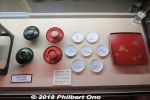
Tableware used by Tamaya when it was an inn.
|
|

Tamaya inn rear view.
|
|

Seki-juku post office (modern).
|
|

Seki-juku bulletin board (replica). 高札場
|
|

About the Seki-juku bulletin board used by officials to give official notices to people in Seki-juku. 高札場
|
|
|
|

Beauty salon in a traditional building in Seki-juku.
|
|

Antique shop sign.
|
|
|

Old shop sign adds to the townscape's charm.
|
|

Fukuzoji Temple gate. 福蔵寺
|
|

Fukuzoji Temple has Koman's grave. 小万の墓 福蔵寺
|
|

Fukuzoji Temple 福蔵寺
|
|
|
|
|

Jizo-in Temple anchors one end of Seki-juku. It belongs to the Shingon Buddhist Sect, Omuro School. 地蔵院
|
|

Jizo-in Temple, Main Hall is an Important Cultural Property. 地蔵院
|
|

Jizo-in Temple, Main Hall is an Important Cultural Property. 地蔵院
|
|

Jizo-in Temple, Main Hall
|
|

Inside Jizo-in Temple, Main Hall.
|
|

Jizo-in Temple's bell tower is also an Important Cultural Property.
|
|

Jizo-in Temple's Jizo statue.
|
|

Jizo-in Temple's Jizo statue.
|
|

Inns in front of Jizo-in Temple.
|
|

Aizu-ya inn in front of Jizo-in Temple. 会津屋
|
|
|
|
|
|
|
|

Hyakugo Bank, Seki Branch is a modern building designed in the traditional style. 百五銀行 関支店
|
|

Hyakugo Bank, Seki Branch 百五銀行 関支店
|
|
|
|
|
|

Oi house
|
|

About Oi house
|
|

Kaiunro, former geisha house in Seki-juku. 開雲楼
|
|

On left, Kaiunro 開雲楼, former geisha house in Seki-juku. On the right is another former geisha house, Shokakuro 松鶴楼.
|
|

Gochisoba plaza used for greeting VIPs arriving Seki-juku. 御馳走場
|
|

Tokaido Road marker.
|
|
|

More latticed walls in Seki-juku.
|
|
|
|

JR Seki Station on the Kansai Line. JR関西本線 関駅
|
|

Ninja at JR Tsuge Station.
|
|

JR Tsuge Station connects to the JR Kusatsu Line.
|
|
|
|
|
|













































